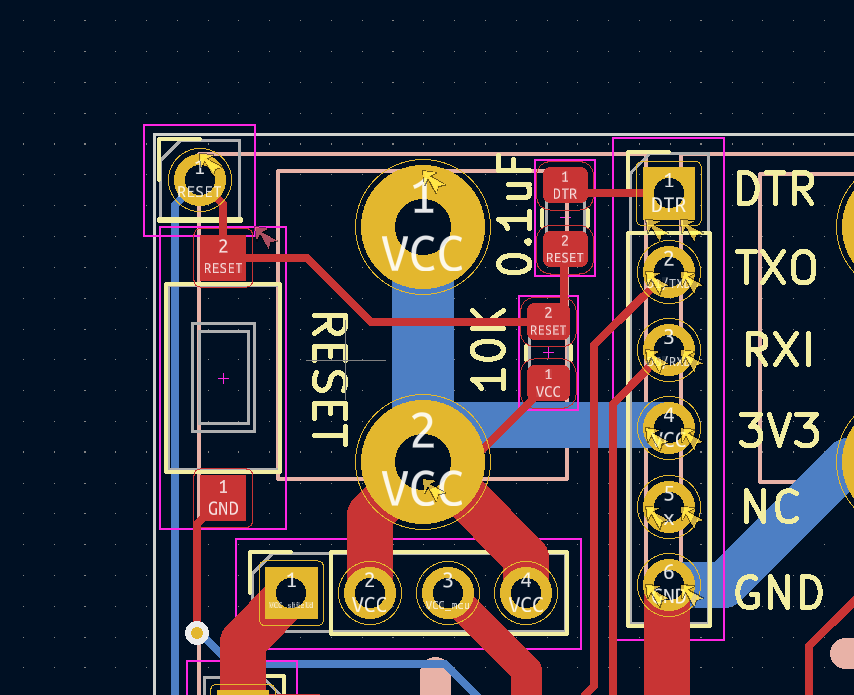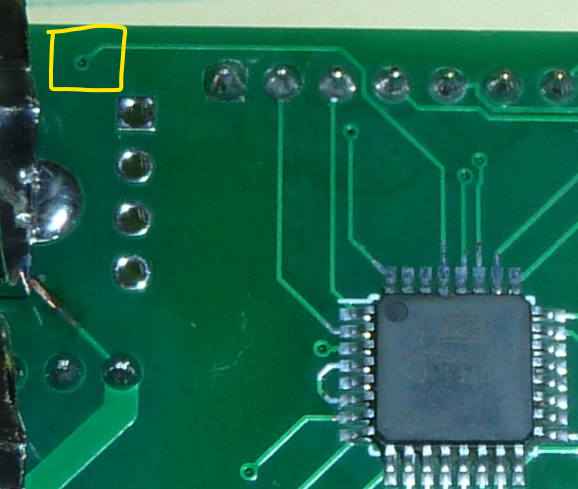Version 3.0, as described in recent threads (see link below). TL;DR: it is meant as a common test platform for comparing different radios, whose radio shields (also posted on openhardware.io) can plug into the test platform. I have posted shields for 6 different radios here on openhardware.io that you may plug into this common test platform. The shields are very easy to design and put together, and their small size means they are inexpensive to fabricate. Additional shields for other radios may be posted by anyone, and I would encourage that if you are so inclined. The more shields that are posted, the more useful this platform is for comparing different radios, either now or in the future.
In addition, the patform offer two probe points for collecting current consumption information: one current consumption probe point for the mcu and a separate probe point for current consumed by the radio.
Version 3.0 is a refinement over versions 1.0 and 2.0, whose files were previously posted here. Version 1.0 and Version 2.0 are retired, and their files are no longer posted.
I posted the complete KiCAD 6 archive for this project. It is the .rar file under this project's "Files" tab. Inside the .rar file is a zip file. Don't unzip the .zip file. Rather, in Kicad 6, under the "File..." menu, go to "Unarchive project...." and give it the intact .zip file. As simple as that, KiCad will then duplicate the project on your system, giving you full control to make changes or move on from there without having to recreate anything. That means I'm not a bottleneck. Anyone can open up the project and pick up exactly where I left off if they want to make changes or fork. As basic as that may sound, this is a vast improvement over other posted projects which post only the gerber and drill files. Even if the only thing you want is access to the symbol and footprint for the particular AA battery holder part used in this project, you can find them in the KiCad project libraries 000_Project_Symbol_Library and 000_Project_Footprint_Library and then use them in an entirely different project if that's what you want to do.
Genesis: https://forum.mysensors.org/topic/11917/anyone-using-tried-the-e28-2g4m27s-2-4ghz-lora-sx1280-27db-module/133?_=1653883285871
Please note:
@Larson said in Anyone using/tried the E28-2G4M27S 2.4Ghz LoRa SX1280 27dB module?:
@NeverDie said in Anyone using/tried the E28-2G4M27S 2.4Ghz LoRa SX1280 27dB module?:
https://mcudude.github.io/MiniCore/package_MCUdude_MiniCore_index.json
It's very easy to use. You can install it into the regular Arduino IDE, pick from among the MiniCore "boards" in the board manager, select the 8Mhz option and a few other obvious options, and then you're done with instalation. From that point on your code will automagically compile using MiniCore. Just to be sure, I gave it a try myself, and I'm now blinking a blue LED off of Ardino Pin 20. It works!
I leave this post as a reminder to anyone else reading this thread. The MCUDude link and installation step is VERY important. To install in the Arduino IDE add the link in File/Preferences/Additional Board Manager URLs; go to Board Manager and filter on minicore, click on Install when MiniCore comes up. Next when selecting the MiniCore board, make sure to select Clock as Internal (8 MHz), or avrdude won't be able to find your board. I went with the other board manager defaults and ... WaLa... my new barebones board is blinking on both pins 20 and 21. Overlooking, or not remembering, this May 14 post has cost me several weeks. So if you build yourself a barebones, heed this post.
 Version 3.0 atmega328p test platform:
Version 3.0 atmega328p test platform:


